Cork Oak

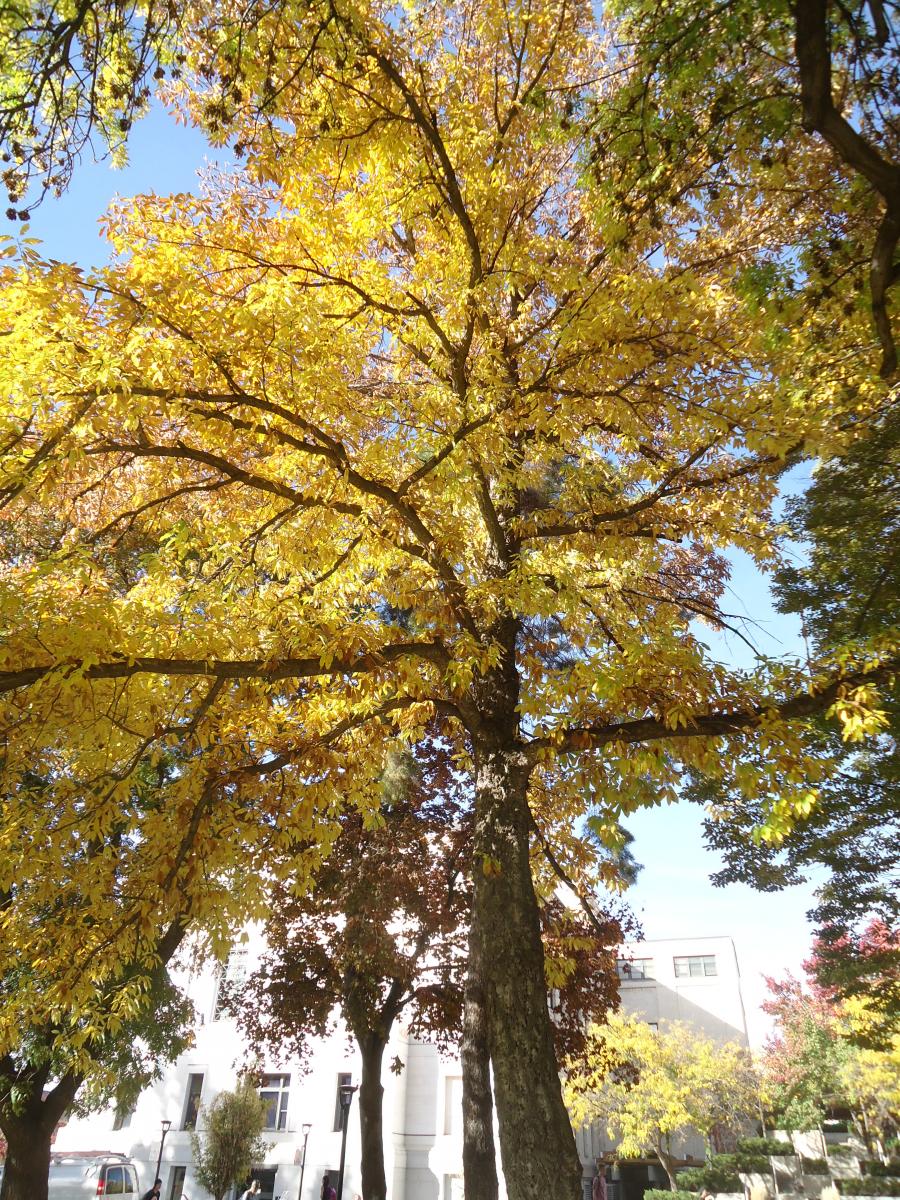
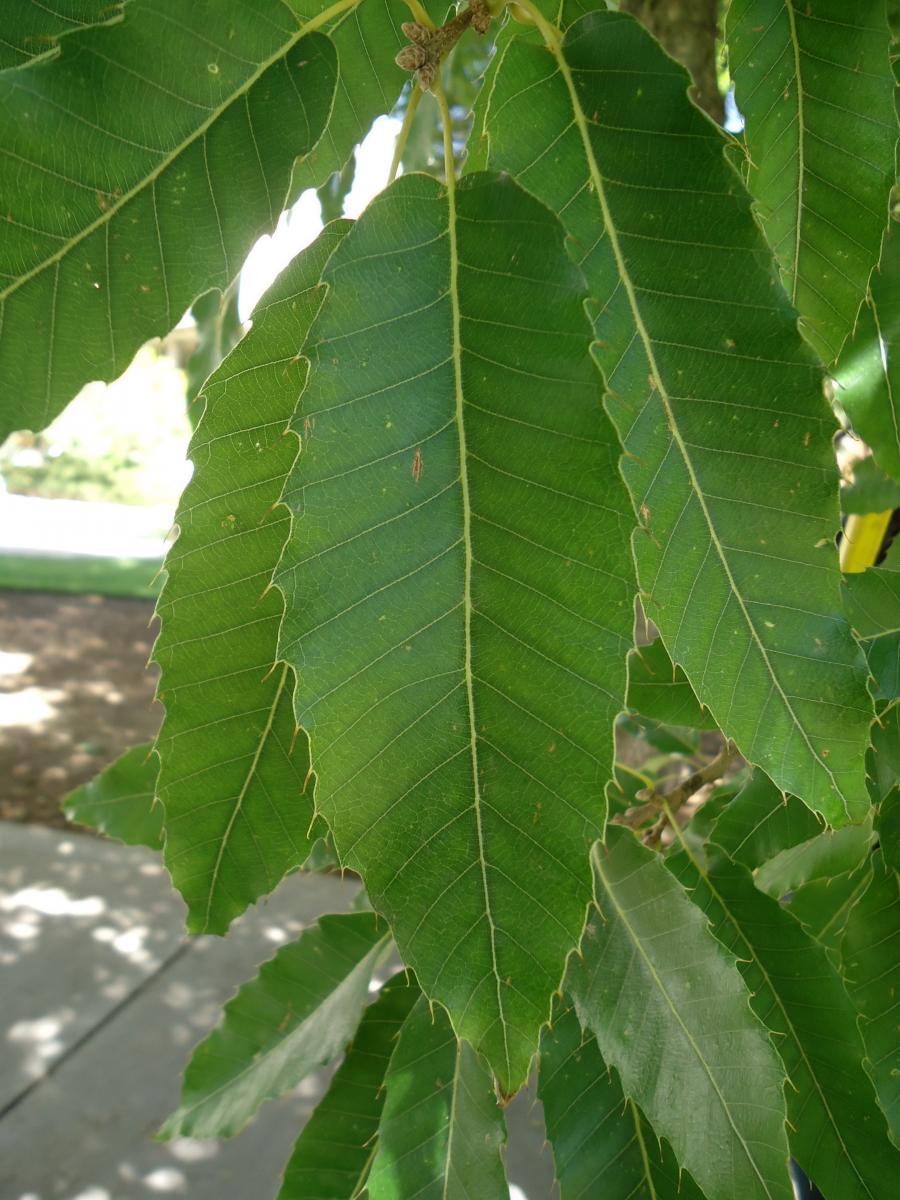
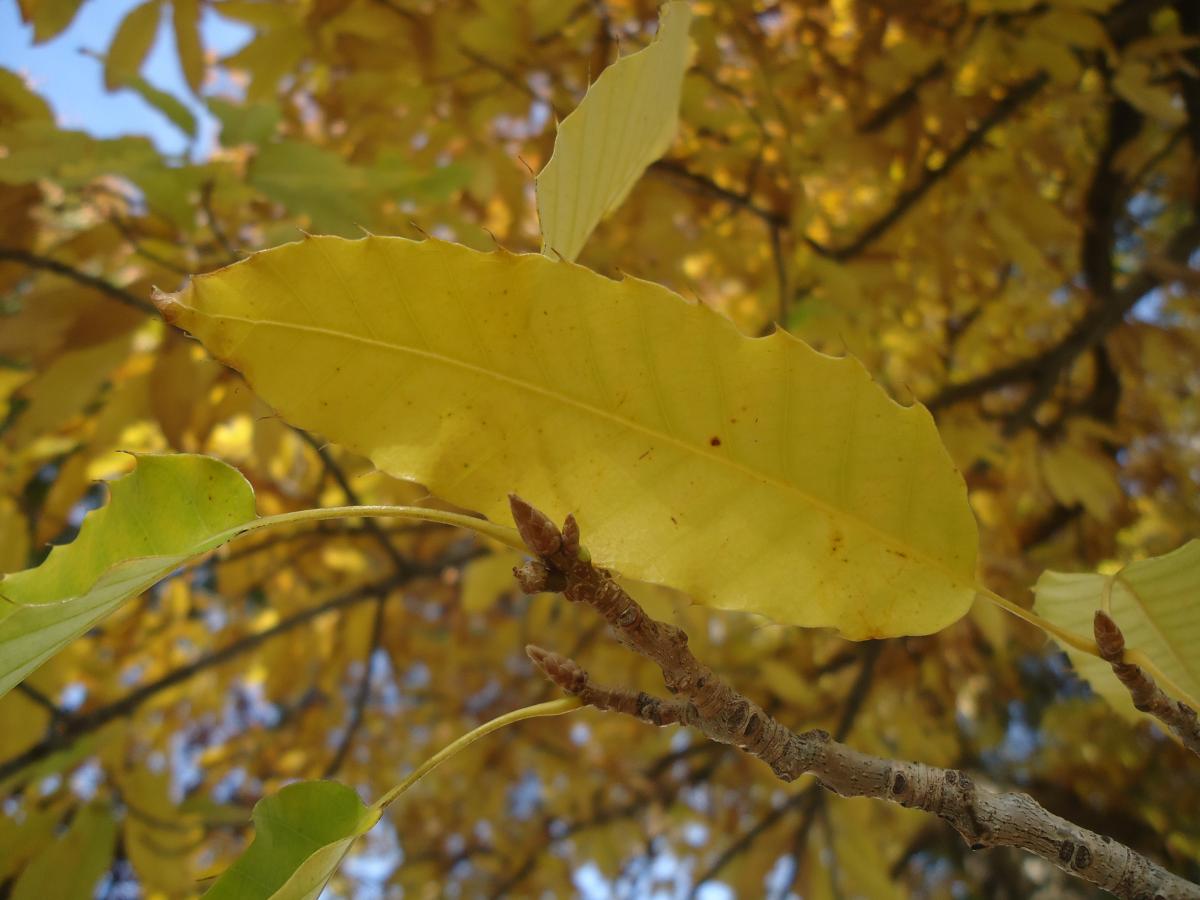

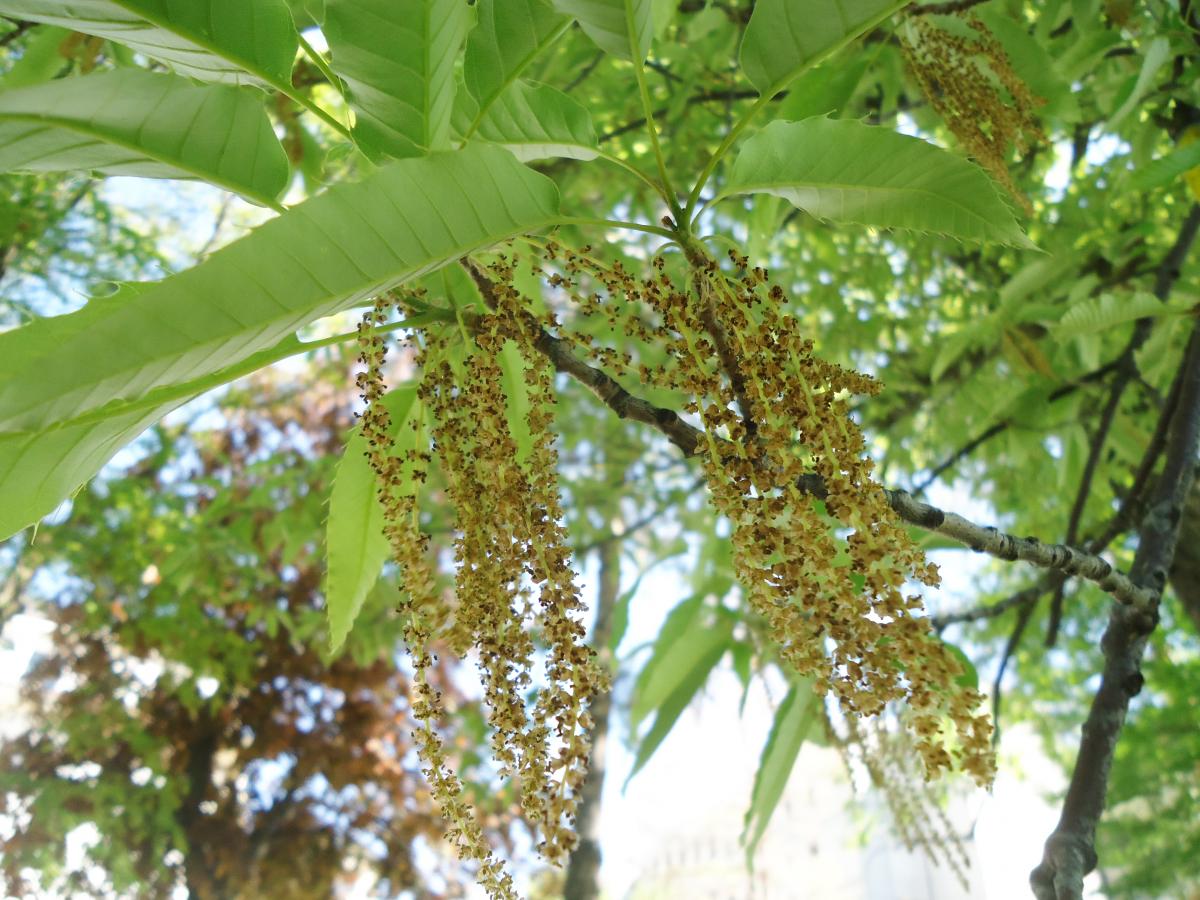

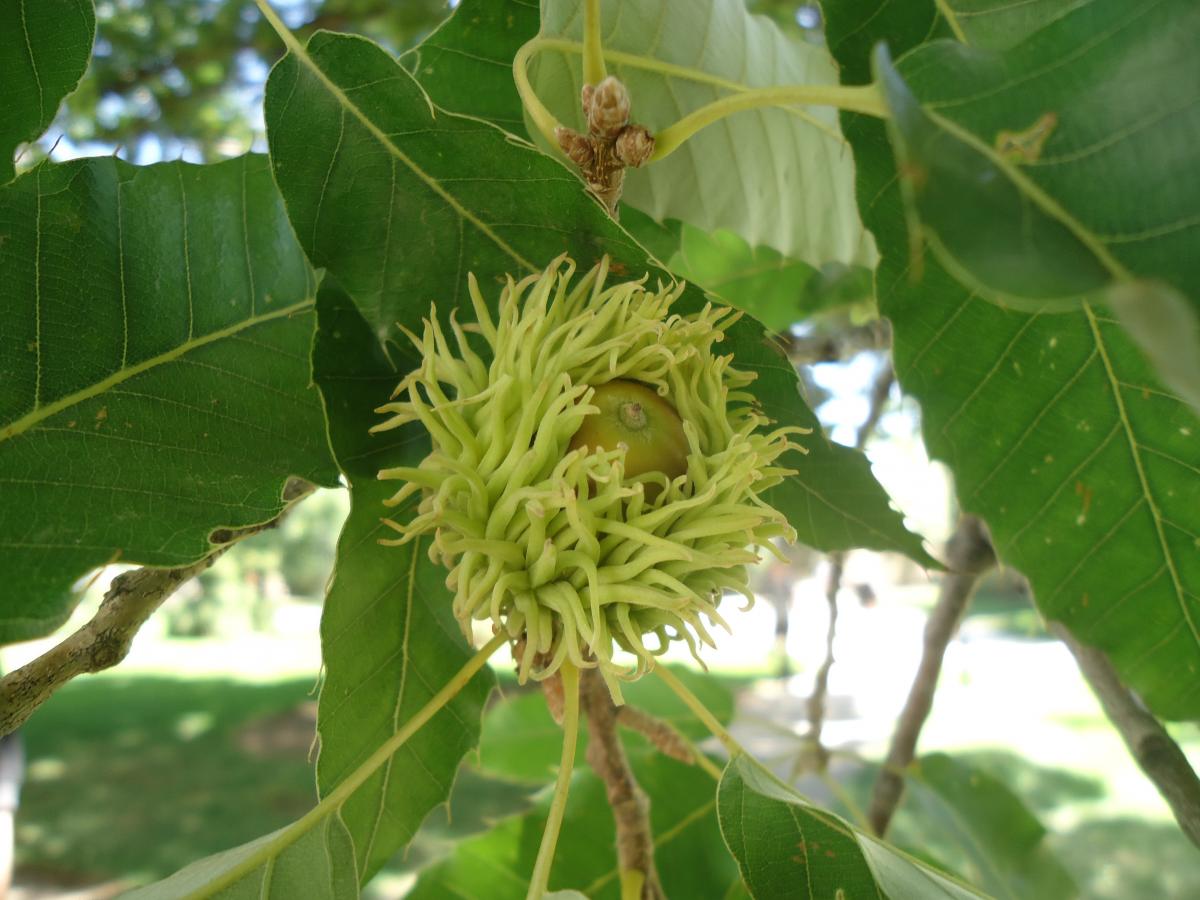

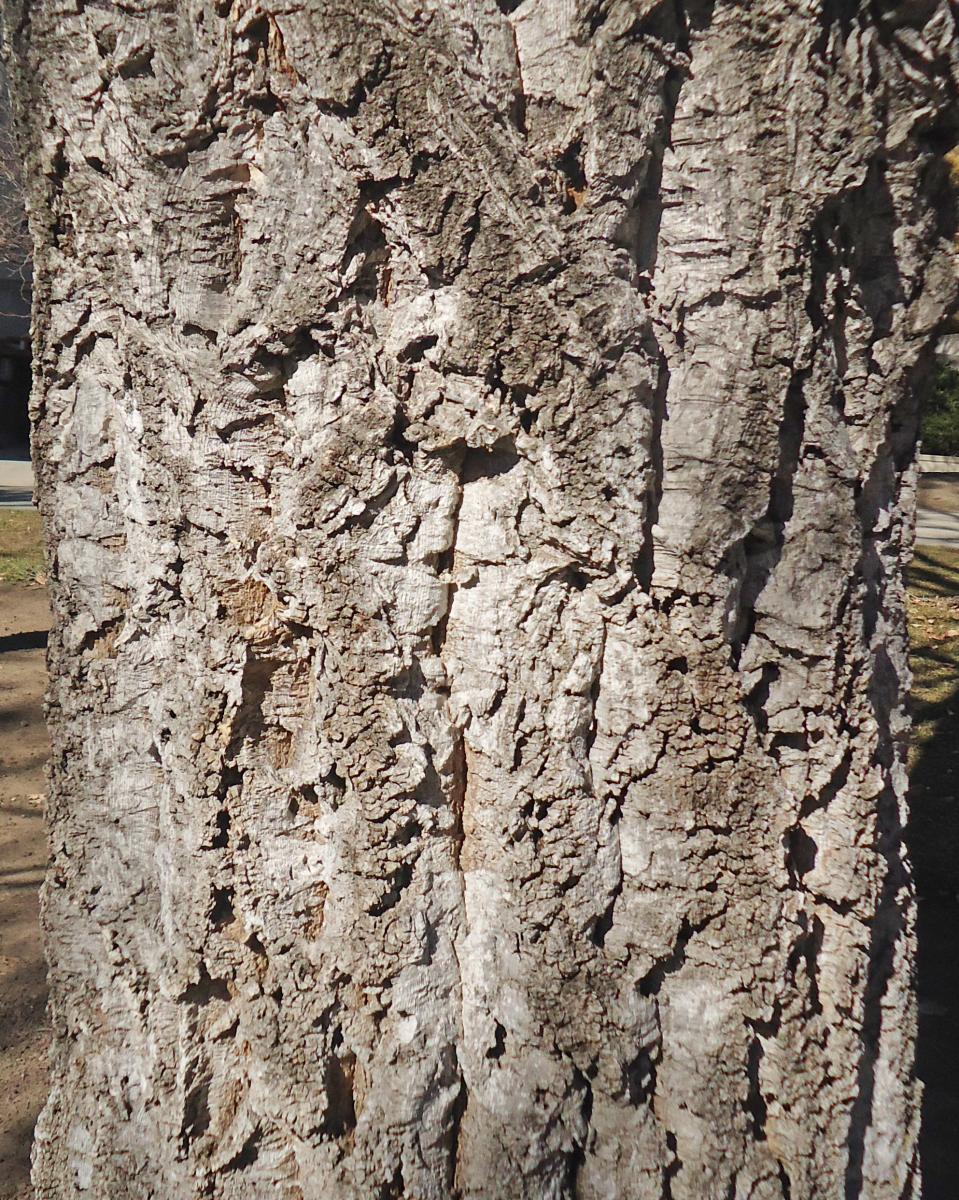
Quercus variabilis
Leaves: Deciduous. Leaves have small, sharp serrations, no lobes. The leaves are 3 to 5 inches long, weakly lobed or coarsely toothed, dark green above, paler beneath, with the leaf edges often downcurved.
Bark/Twigs: Very thick, ridged, corky bark.
Flowers/Fruit: Flowers are catkins produced in mid-spring. The acorns are ½ to ¾ inch long, covered two-thirds by a deep, fringed, scaly cap with elongated scales.
Mature size and shape: Large. 40 to 50 feet high. Rather open growth habit.
General information/special features: Plant in full sun. The tree forms a thick, rugged bark that can be harvested to produce cork. It has a lower yield than its relative Q. suber which is the primary source of cork for wine bottle stoppers. The harvesting of cork does not harm the tree. Only the bark is extracted, and a new layer of cork regrows, making it a renewable resource. Q. suber is an evergreen oak and is not hardy in Utah.
Landscape use and maintenance: Unique specimen tree. Slow growing rate. Average maintenance.
USDA Hardiness Zone: 5 to 7
Family/Origin: Fagaceae - Beech and Oak. Native to eastern Asia, China, Korea, and Japan. Also called the Chinese cork oak.
Campus Use: Rare. Unique specimen. The tree south of the Park Building (Bld 1) is on the Utah Big Tree Registry.
